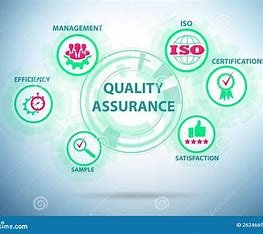“Discover how quality assurance in life sciences can be more than just compliance. Learn how it fosters trust, innovation, and customer loyalty in the industry.”
Is quality assurance the key not only to earning your life science customers trust, but also their hearts? Let us explore.
Introduction
The importance of quality assurance (QA) transcends compliance with regulations in the job we do in life sciences, a rapidly evolving field that has the potential to enhance health and well-being through innovation. It is the glue that holds costumer trust or dismantles it. Does quality assurance entail only compliance with the regulations, Or can it be a way to capture your customers hearts?
The Foundational Regulatory Layer: Required, But Far from the Ultimate Goal
Regulatory compliance is the pillar that life science industry stands upon. The FDA (Food and Drug Administration), EMA (European Medicines Agency), and other regulators have high standards for product safety, efficacy, and quality. These are deal breakers and de facto entry tickets to the market.
But also note, compliance is not equal to winning.
Regulatory compliance is the cost of admission to the game, but not how you win it. It is one thing to be compliant, but what you do with compliance is the real game changer. Enter quality assurance which comes to play here.
Beyond Compliance Quality Assurance
Regulatory compliance is a checkbox for activities in quality assurance department. It certainly includes regulatory compliance, however it goes far beyond this simple concept. Quality assurance is part of the practices, systems, and attitude to make sure that your products satisfy customers constantly.
This is how quality assurance moves beyond compliance:
Create customer-centricity: QA can really help development to understand that it is unlikely that customers are concerned with whether a regulation standard is met but they care about the safety of the product. This includes the various needs, expectations and experiences.
Continuous Improvement: QA promotes a culture of continuous improvement. It is not just about ticking boxes, but to continually augment product quality, safety, and efficacy.
Risk Management: While there are many regulatory risks involving product safety, QA is not only looking for regulatory risk but business risk including reputational damage, customer dissatisfaction and market competitiveness.
Encouraged Innovation: A quality assurance not only welcomes innovation, but it also seeks to innovate for better product quality.
Data Driven Decisions: The core of QA is data analysis and insights, while the decision-making process is data centric and outcome-oriented.
Establishing Trust: The Heart of Quality Assurance
Trust is fundamental for any successful business, especially in the life science space. Patients, healthcare providers and other stakeholders need to be assured about the reliability of the products they use. Regulatory compliance is the bedrock of trust, but quality assurance principles are the mortar that holds it together.
Consistency: A quality assurance QA ensures consistency in the final product, each batch or every product made is going to be of the same consistent quality. This consistency builds trust as customers begin to rely on the reliability of your products.
Transparency: Being open about the quality process can be a key driver of trust. This involves clear labeling, offering product info, and informing about recalls or issues as quickly as possible.
Time: Rapid response to quality issues indicates commitment to safety and customer satisfaction
Communication: Customers appreciate when brands keep them in the loop about changes to their product, improvements, or any safety measures taken.
Flexibility: With quality assurance you can pivot your products and adapt them to the changing circumstances or changing user behaviours which further establishes trust by being contextually relevant.
With these principles, quality assurance can instead become a powerful means of trust with customers rather than something that must be regulated.
Why Ignoring Quality Assurance Will Cost You So Much More
With life sciences being an extremely competitive space, lack of quality assurance could lead to severe repercussions. So, without the introduction that you would expect from me, here are some of those risks we run if we ignore QA.
Brand Dilution: The integrity of your brand can be diluted by a single quality issue, product recall or safety concern. It takes time for trust to develop, but trust can be lost in a second.
Decreased Customer Loyalty: Loyalty is something that takes time to build but can be lost, just as easily. If QA is neglected, customers will be unsatisfied and leave.
Legal and Financial Repercussions: The legal, reputational, and financial repercussions of quality problems can dwarf the investment in a solid QA process.
Market Competitiveness: It is a customer market and these companies that believe in quality assurance will always be on their competitive edge than the others.
Eyes on Compliance: If a company constantly faces quality issues, increasing scrutiny from regulators can occur over the long-term, involving additional inspections, audits and penalties.
These risks alone remind you that anything too cheap usually is not worth anything and that definitely includes the quality assurance end of your development process.
The Passage of Time and the New Shape of Quality Assurance in Life Sciences
The role of quality assurance has changed too, as the life science industry has matured over time. A few trends are driving the future of QA
Digital Transformation: The incorporation of digital technologies like data analytics, automation, and AI in quality assurance is on the rise to ensure product quality and safety.
Patient-Centric: The industry is moving towards a patient-centric approach where the QA processes and products are developed with the end-user in mind.
Need to Cater Global Supply Chains: QA needs to tackle global supply chains and international regulations which would require broader approach and standardization as compared to only localized scope.
Data Integrity: Emphasis on accurate and complete data is increasing as a focus for regulators, making Data integrity an important part of QA processes.
More Proactive Risk Based Approaches: QA continues to become more proactive in a risk-based approach, allowing companies the ability to target where resources are needed most.
Collaboration: QA can no longer operate in a vacuum and as such, includes collaboration across departments and third-party suppliers to ensure quality throughout the process.
Conclusion: QA as Competitive Edge
For regulatory purposes, it is quality assurance; for the life science industry, it is winning trust and loyalty from customers with the added challenge of winning their hearts.
Ignoring the importance of QA can be very detrimental to things like reputation and finances. Nonetheless, making quality assurance a strategic priority will provide your business an edge.
And as a quality and regulatory consulting company, we know how much QA matters to the life science space. Quality assurance is more than a checklist: it is your commitment to quality, a promise to customers that they are in good hands.
Reach out to BioBoston Consulting today or visit our website to understand how we can help your organisation.
Download the Audit Checklist .


